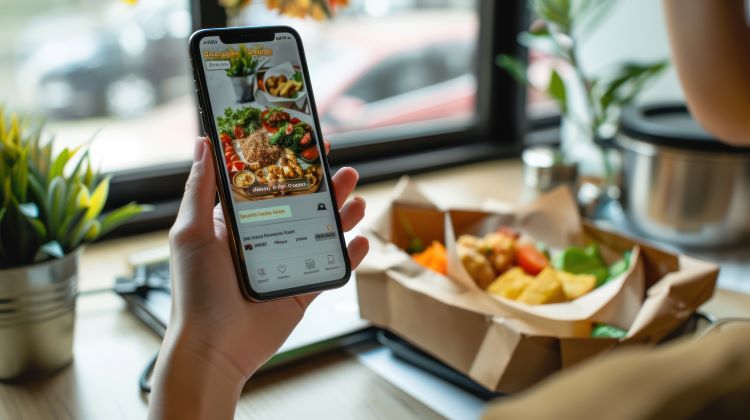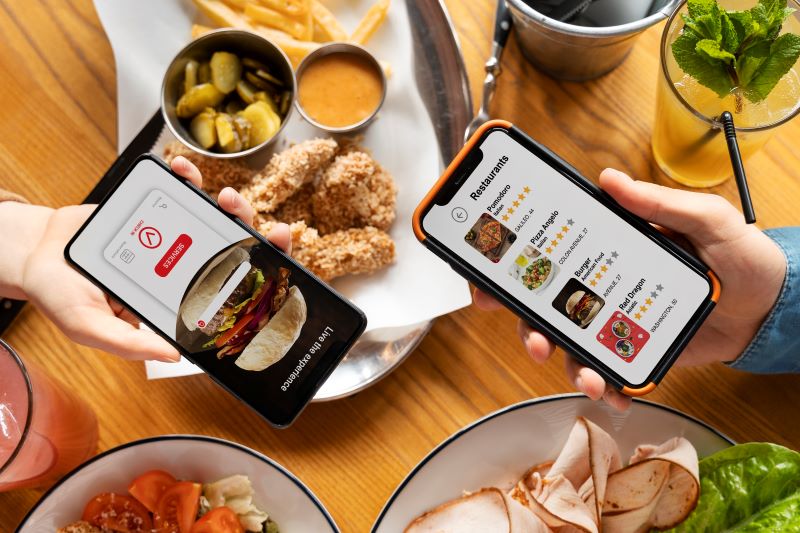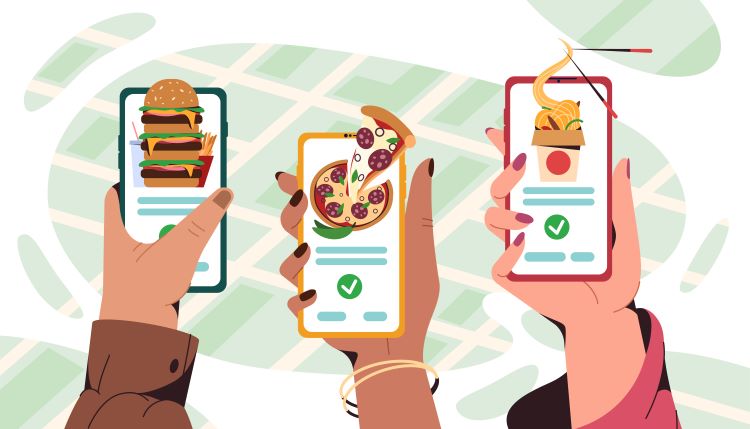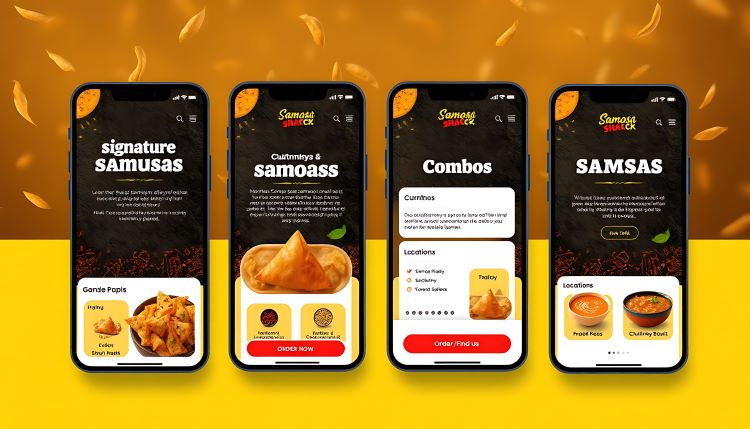Food Delivery App Development Company: Should You Invest on an Online Food Delivery App?
Would it be surprising to learn that the anticipated revenue growth for food delivery application development is 9.9% CAGR (2019-24)? This is because food ordering & delivery services have transformed how consumers get their meals & food ordering apps are set to touch $16.6 billion in 2024.
Let’s have a sneak peek at some of the compelling reasons to capitalize on on-demand food delivery apps:
- Offers restaurants to expand their consumer reach while scaling digital revenue streams and earning huge profits.
- With local & global menu availability, food chains, restaurants & food aggregators tap on additional growth opportunities.
- Meeting customer preferences with easy targeting of the right audience.
- Promotional offers encourage customers to use the service more often.
- Loyalty points on repeat orders positively impact customers and improve their experience.
Different Types of Online Food Delivery Apps
We believe every food business is unique: a restaurant, a cloud kitchen, a food truck, or a home delivery service. Therefore, based on the business priority and customer needs, an organization can choose any one of these three types of on-demand apps:
Order & Delivery Apps:
This logistics-focused delivery app is ideal for single restaurants, food trucks & grocery stores as they don’t need to hire their delivery partners.
Aggregator Apps:
Primarily third-party apps that take care of logistics and delivery for food businesses that want to enhance their online visibility and reach.
Full-stack Delivery Apps:
This comprehensive app monitor and manages everything from taking orders and assigning to delivery partners to tracking inventory and processing payments. It enables you to optimally use delivery resources for a seamless business pipeline from your carriers to the customer’s doorstep.
Business Models for On-Demand Food Delivery App
If you are planning to develop a feature-rich food delivery app, you should know three main business models to consider. So, let’s dive into those categories to find out their advantages.
1) Platform To Consumer Model:
Many famous restaurant delivery services apps like Uber Eats and DoorDash use the Platform for Consumer model. This model combines all of the offerings of small restaurants and allows customers to order from them via the app platform. Here, the restaurant partners are responsible for their fleet of couriers.
This model is more profitable as platforms generate revenue from customers and restaurants by charging a fixed fee for each other. In addition, the model’s value proposition allows restaurants to bring and automate orders via an optimized mobile app/web platform, replacing the traditional food ordering paradigm via phone calls.
2) Delivery Service Aggregators:
The Delivery Service Aggregator model is technically a part of the Platform to Consumer model. But it’s completely worth being separated.
The platform works as a bridge between a customer (user) and numerous local restaurants in the aggregator model. If customers face any problems with their deliveries or orders, they offer customer support on behalf of these restaurants. Here, the platform charges a fixed fee on every successful transaction.
GrubHub, JustEat, and Delivery Hero are the food delivery platforms that utilize this model. Moreover, some companies have tried to adopt subscription models where customers can pay a monthly fee to leverage other benefits such as discounts and free home delivery.
3) Restaurant to Consumer Model:
In the Restaurant to Consumer Model, the restaurant serves food to their customers from their locations. McDonald’s, Burger King, and Domino’s are well-known examples following this model.
Moreover, these companies adopted food delivery from their websites and apps or joined delivery platforms to modernize the approach. In addition, they can collaborate with food delivery partners like DoorDash.
Domino’s turned out to be a game-changer for the food-delivery revolution. Some of the company’s latest innovations are:
- To place orders, a voice recognition system is used. An app that allows users to track delivery while it is on its way.
- Drones are being tested for automated delivery.
Essential Features of a Food Delivery Service App
What makes an app great? Or what kind of app retains its users? It is all the game of kinds of features that an application provides. Here, we will discuss the essential elements from the basis of consumers, admin, and courier.
Consumer Version:
Once your app comes into the market to the point where it gets valuable customers, engaging and retaining them is vital. The following features can help with it.
1. Hassle-free Registration: Registration is the first step that users will take. So, it should be simple and quick. It can be done through email and password or via social media like Google, Twitter, Instagram, and more. Whatever the app contains, the data should be protected so the user has a sense of security.
2. User Profile: Now that the users have registered, they would want to manage their profiles. Their profile will include personal information, favorite restaurants, order history, saved payment options, food preferences, and much more that can provide quick access to them.
3. Geolocation : Setting the exact location should be simplified. It can be done via auto-detecting or filling in the details manually. The area can be categorized into home, work, or other categories. Their exact location will also help users to find nearby restaurants. Additionally, it will also connect the users with local restaurants.
4. Restaurant/Dish Search: Search option directly affects user retention. The more accessible users find a restaurant or dish, the better their chances to return. To make the feature more user-friendly, you can add certain filters like location, food category, etc. They should be able to locate multiple restaurants quickly.
5. Placing an Order: Making an order should be easy for the user. They should be able to add items to the cart, remove items or add more if needed. The total cost, including the delivery fee, should also be available in the cart with other information regarding tax, service fees, and more. Further, a feature like pre-order food will be a cherry on top of the cake.
6. Quick Payment: Now that the user has placed an order, making payment should not be a problem. They must get multiple payment options like debit or credit card, cash on delivery, UPI, or other in-built payment methods.
7. Real-time Tracking: Accurate tracking of the order allows users to get instant updates on their food. Whether it is in the preparation stage, packing stage or prepared food is on its way, and estimated delivery time so that they can monitor it throughout. Further, information regarding the delivery driver allows them to contact the person directly.
8. Customizing Orders: People have become very conscious about what they eat. A customization option in the application will help in user retention. Restaurants and food delivery providers must adjust to the users’ options. For instance, some may be allergic to a food item, or others may want gluten-free food.
9. In-app Messaging: The feature is crucial as it will allow users to contact customer care in case of any problem. In addition, an in-app messaging feature will also help them communicate with couriers.
10. Rating and Reviews: Consumer feedback is an essential part of the app. They should be able to rate both the food and the delivery. It provides them a space to share positive and negative experiences with others. Also, the admin can use this to enhance their app.
11. Push Notification: Through push notifications, users can get information regarding discounts, coupons, special offers, and estimated delivery time, ensuring they get critical data. It is also used for providing every-minute details on their current order.
Restaurant Version:
Restaurants are another part of this three-sided business model. Hence each restaurant should be able to display menus, provide information, and quickly contact its customers. Its features should include the following:
1. Admin Dashboard : It is the primary feature, ensuring access to multiple management tools like controlling delivery orders, public data, and other content.
2. Registration : This feature will help a restaurant create a representative account that will be displayed on the search. Restaurants usually undergo authorization with login (company name) and password.
3. Content Management: Content management features will let the restaurant edit public information like restaurant name, working hours, address, dish prices, delivery rates, menu, photos, videos, and more.
4. Order Management: This function will help restaurants track the order in real-time. It can contain information about order status, whether accepted, ready, delayed, or canceled.
5. Receiving Payments: As restaurants receive the payment after placing the order, a payment feature is essential for a transaction fairness guarantee.
6. Customer Support: Restaurants should be able to track their customer’s concerns via live chat. They should quickly receive any questions from buyers and answer them instantly.
7. Courier Version : Developing a mobile app for delivery partners is equally important as they will use it on the go. Therefore, it must include all features that make food delivery easy and where they can contact in an emergency.
8. Registration : As much as customers and restaurants must make a profile, so is it for the delivery people. It can be done by email, password, or social media accounts.
9. Profile Management: The profile usually contains information about name, working hours, photo, and others. The feature should be easy to use to make any changes hassle-free.
10. Order Management: Such a feature will help delivery workers view, accept, or reject orders.
11. GPS Support: It is imperative to ensure that the driver delivers food to the correct address without the delivery person getting lost in the way.
12. Contact Restaurant/Customer: The delivery person should be able to contact a consumer or restaurant if needed while delivering food.

How Much do Food Delivery Service Apps Cost?
Estimating the exact amount for food delivery apps can be difficult as it can only be decided after considering factors like the complexity of the app, maintenance, app platform, software and technology required, and the team you will hire to develop the app.
Further, deciding a price is only possible when the development is hired and they have examined all the factors for building the application. The more complex the app is, the higher will be the price for it.
Let’s Turn Your Ideas Into Reality!
Finding the perfect team for the best food delivery apps can be challenging. While on the verge of developing a feature-rich food delivery app, it’s essential to understand which food delivery market you are planning to target, the problems/challenges to handle, and your goal. You would want a reliable team that understands all the specific details you want for the app. With the right combination of technology and experts to provide quality work, we at Shyam Future Tech can help you build a breed of online food delivery apps. Get in touch today!










